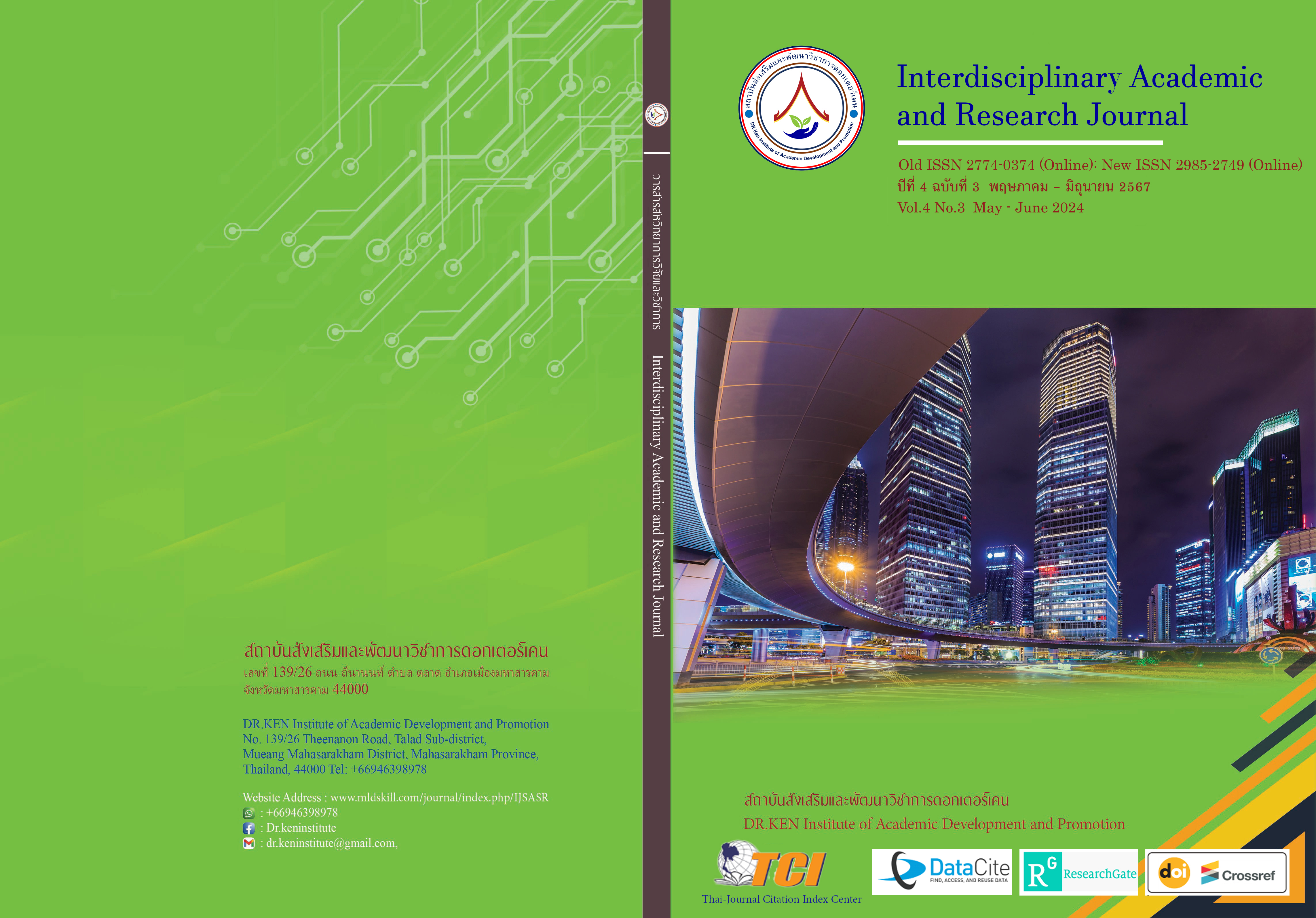Educational Institution Management Technology for Safety
DOI:
https://doi.org/10.60027/iarj.2024.276222Keywords:
Technology; , Educational Institution Administration; , SafetyAbstract
Background and Aims: School management technology for safety has an important background in both preventing dangers outside and inside the school. It focuses on adapting technology to increase efficiency in maintaining the safety of students and personnel. An important objective is to create a safe environment for all members of the educational community. Using technology to strengthen the inspection and effective suppression of dangers that may occur in educational institutions. and to support a safe and joyful learning process in the education industry
Methodology: The study of school administration management technology for safety includes important steps and methods such as risk analysis for school safety. Choosing the right technology, such as a closed-circuit television system (CCTV) or an emergency notification system. Training and teaching to educate staff and students about safety measures. Preparation of emergency work plans, etc., with a focus on making all involved parties understand and strictly follow the prescribed procedures. To maintain the safety and well-being of everyone in the educational institution.
Results: The management of educational institutions with technology for safety is the development of tools and systems that help manage educational institutions more efficiently and safely. Using modern technology such as closed circuit cameras (CCTV) and automatic data recording systems. Authenticated access system or automatic notification system To help reduce accidents or unexpected events in educational institutions. This allows administrators to supervise and control educational institutions more efficiently and safely. Creating educational institution management technology for safety is an important part in giving importance to the prosperity of educational institutions and the public's confidence in educational services.
Conclusion: Using technology to improve efficiency and safety in educational institutions—such as access control, CCTV, and automated notification systems—builds trust in the quality of education provided and supports institutional success.
References
กระทรวงเทคโนโลยีสารสนเทศและการสื่อสาร. (2559). แผนพัฒนาเศรษฐกิจและสังคม. กรุงเทพฯ: กระทรวงเทคโนโลยีสารสนเทศและการสื่อสาร.
ณฐวัฒน์ พระงาม. (2555). การติดต่อสื่อสารแบบปฏิสัมพันธ์ในองค์การ. พิมพ์ครั้งที่ 1. พิษณุโลก: มหาวิทยาลัยพิษณุโลก.
พระมหาศิริชัย สิรินฺทาโณ (ศรีรัมย์). (2556). การจัดการทรัพยากรมนุษย์เชิงกลยุทธ์ขององค์การบริหารส่วนตำบลในอำเภอลำปลายมาศ จังหวัดบุรีรัมย์. วิทยานิพนธ์พุทธศาสตรมหาบัณฑิตรัฐประศาสนศาสตร์ (การบริหารจัดการคณะสงฆ์) มหาวิทยาลัยมหาจุฬาลงกรณราชวิทยาลัย.
ภัคคพร พิมสาร. (2564). เอกสารประกอบการสอน ประเภทสื่อสังคมออนไลน์.มหาวิทยาลัยราชภัฎสวนสุนันทา. Retrieved from: https://elfar.ssru.ac.th/pukkaporn.
สำนักงานเลขาธิการสภาการศึกษา. (2560). แผนการศึกษาแห่งชาติ พ.ศ. 2560 – 2579. กรุงเทพมหานคร: พริกหวานกราฟฟิค จำกัด.
สำนักงานสภาพัฒนาการเศรษฐกิจและสังคมแห่งชาติ สำนักนายกรัฐมนตรี. (2565). แผนพัฒนาเศรษฐกิจ และสังคมแห่งชาติ ฉบับที่ 13 (พ.ศ. 2566-2570). กรุงเทพฯ: ราชกิจจานุเบกษา.
อนัญญา ทาระธรรม. (2558). การพัฒนากลยุทธ์ในการพัฒนากระบวนการเรียนรู้ที่เน้นผู้เรียนเป็นสำคัญของนักเรียนโรงเรียนวัดเนินหินแร่ (เหมยากรนุสรณ์) อำเภอปากพลี จังหวัดนครนายก. สำนักงานเขตพื้นที่ การศึกษาประถมศึกษานครนายก: สำนักงานคณะกรรมการการศึกษาขั้นพื้นฐาน.
Downloads
Published
How to Cite
Issue
Section
License
Copyright (c) 2024 Interdisciplinary Academic and Research Journal

This work is licensed under a Creative Commons Attribution-NonCommercial-NoDerivatives 4.0 International License.
Copyright on any article in the Interdisciplinary Academic and Research Journal is retained by the author(s) under the under the Creative Commons Attribution-NonCommercial-NoDerivatives 4.0 International License. Permission to use text, content, images, etc. of publication. Any user to read, download, copy, distribute, print, search, or link to the full texts of articles, crawl them for indexing, pass them as data to software, or use them for any other lawful purpose. But do not use it for commercial use or with the intent to benefit any business.
















.png)


